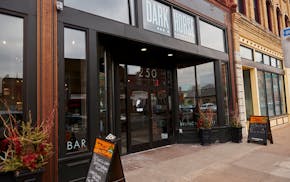A fast-spreading coronavirus delta variant is now the dominant source of COVID-19 in Minnesota, where genomic sequencing over the past two weeks has found the variant in 90% of positive specimens from infected patients.
The Minnesota Department of Health on Wednesday reported that 1,367 total infections involving the delta variant have been identified, including in 703 samples collected since June 20 and sequenced since July 26.
While a minority of positive coronavirus specimens are sequenced, state health officials said there are enough to demonstrate that the delta variant is fueling the latest COVID-19 wave in Minnesota. Virologists have found that the delta variant creates much higher viral loads in the people it infects, making them more likely to spread the virus.
Severe delta waves in England and India peaked fairly quickly, around two months.
"It is good to be hopeful, and we do learn from what has been experienced in other locations," said Kris Ehresmann, state infectious disease director. "However, I think we are too early in to comment on what will happen in Minnesota."
The state on Wednesday reported 344 COVID-19 hospitalizations, an increase from 90 in mid-July. The positivity rate of COVID-19 diagnostic testing also increased to the state caution threshold of 5%, indicating substantial viral spread in Minnesota.
Another 10 COVID-19 deaths were reported Wednesday along with 1,632 more coronavirus infections, raising Minnesota's totals in the pandemic to 7,715 deaths and 622,216 infections.
The state hadn't reported 10 or more COVID-19 deaths in one day since late May. Nine of the deaths involved people 65 or older — who have suffered 88% of the total COVID-19 deaths in the pandemic — while one involved a Rice County resident in the 45 to 49 age range.
Vaccinations have increased in Minnesota in response to the variant threat and a $100 incentive for new recipients. More than 3.2 million people 12 and older have received at least a first dose of COVID-19 vaccine — amounting to 68.5% of the eligible population. More than 55,000 doses were administered in the week beginning Aug. 1 — the highest weekly total in more than one month.
More than 31,000 people signed up in the first week for the incentive, exhausting an initial $2.5 million in federal funds for the program. Minnesota's Legislative COVID-19 Response Commission approved $13 million more in federal emergency funding to extend the incentive program.
Vaccination levels decline with age. More than 92% of people 65 and older have at least received first doses of COVID-19 vaccine in Minnesota. The rate drops to 45% among Minnesotans 12 to 15, but that has increased as parents have sought vaccinations for their children before the start of school.
State officials are hopeful that vaccination numbers will climb in a few weeks if, as expected, the Food and Drug Administration grants full approval of the Pfizer COVID-19 vaccine, which has received only emergency authorization so far. The Moderna and Johnson & Johnson vaccines also are available under emergency use authorizations.
Clinical trials are underway, but a lowering of the age threshold for COVID-19 vaccine to younger children isn't expected until later this fall at the earliest.
All three vaccines appear effective against the delta variant, which ranks second only to alpha in the total number of variants identified through sequencing in Minnesota.
Sequencing found 18,181 samples involving the alpha variant, which fueled a COVID-19 wave earlier this spring and several outbreaks centered on youth sports. However, only four samples sequenced since July 26 have contained the alpha variant.
Jeremy Olson • 612-673-7744

The 5 best things our food writers ate this week

A Minnesota field guide to snow shovels: Which one's best?

Summer Camp Guide: Find your best ones here

Lowertown St. Paul losing another restaurant as Dark Horse announces closing

